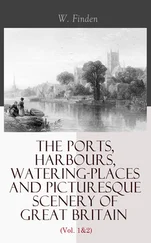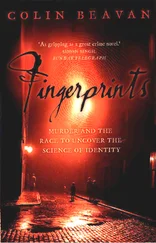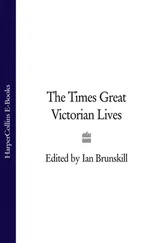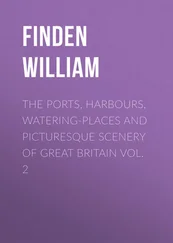NOTES
PROLOGUE
xix
On Sunday, 15
July 1860 . . . for is.6d.
From Whicher's expenses claims in the Metropolitan Police files at the National Archives - MEPO 3/61.
xix
The day was warm. . . into the seventies.
Weather reports in the July, August and September 1860 issues of
The Gentleman's Magazine.
xix
At this terminus in 1856 . . . excelled at untangling.
From reports in
The Times,
7 & 12 April 1856; and 3, 4 & 12 May 1858.
xx
Dickens reported that 'in a glance' . . . 'chronicled nowhere'. In 'A Detective Police Party', parts one and two, House-hold Words, 27 July 1850 and 10 August 1850.
xxi
'the prince of detectives'.
In
Scotland Yard Past and Present: Experiences of Thirty-Seven Years
(1893) by Ex-Chief-Inspector Timothy Cavanagh.
xxi
'shorter and thicker-set' . . . smallpox scars.
In 'A Detective Police Party',
House-hold Words,
27 July 1850.
xxi
William Henry Wills . . . of the Detective police.'
In 'The Modern Science of Thief-taking',
House-hold Words,
13 July 1850. Dickens probably contributed to the writing of this piece. For details of the journal and its contributors, see
House-hold Words: A Weekly Journal 1850-1859 Conducted by Charles Dickens - Table of Contents, List of Contributors and Their Contributions Based on The House-hold Words Office Book in the Morris L. Parrish Collection of Victorian Novelists
(1973) by Anne Lohrli.
xxii
The only clues . . . his eyes were blue.
From MEPO 21/7, Metropolitan Police discharge papers.
xxiii
A Great Western Railway . . . less than an hour.
From
Black's Picturesque Tourist and Road and Railway Guidebook
(1862);
Stokers and Pokers; or, the London and North-Western Railway, the Electric Telegraph and the Railway Clearing-House
(1849) by Francis Bond Head;
Paddington Station: Its History and Architecture
(2004) by Steven Brindle; railway timetables in the
Trowbridge Advertiser
of January 1860.
CHAPTERS 1, 2 & 3
The narrative of these three chapters is drawn mainly from newspaper reports of the testimony given to the Wiltshire magistrates between July and December 1860, affidavits made to the Queen's Bench in November 1860, and the first book about the case,
The Great Crime of 1860: Being a Summary of the Facts Relating to the Murder Committed at Road; a Critical Review of its Social and Scientific Aspects; and an Authorised Account of the Family; With an Appendix, Containing the Evidence Taken at the Various Inquiries,
written by J.W. Stapleton and published in May 1861. The newspaper sources are the
Somerset and Wilts journal,
the
Trowbridge and North Wilts Advertiser,
the
Bristol Daily Post,
the
Bath Chronicle,
the
Bath Express,
the
Western Daily Press,
the
Frome Times,
the
Bristol Mercury, The Times,
the
Morning Post, Lloyds Weekly Paper
and the
Daily Telegraph.
Some details of furnishings are drawn from newspaper accounts of the auction of the contents of Road Hill House in April 1861.
CHAPTER 3
38
On a visit to the country . . . house is his castle." '
In
The King of Saxony's Journey through England and Scotland in the Year
1844 (1846) by Carl Gustav Carus.
38
The American poet . . . privacy of their homes.'
In
English Traits
(1856) by Ralph Waldo Emerson. Quoted in
The English Home and its Guardians 1850-1940
(1998) by George K. Behlmer.
CHAPTER 4
43
It was still light . . . green as grass.
From weather and crop reports for July in the
Devizes and Wiltshire Gazette,
2 August 1860.
43
the railway station's narrow platform.
Rowland Rodway, formerly Samuel Kent's solicitor, was leading a campaign to improve the facilities at Trowbridge railway station. The platforms were dangerously narrow, he argued, there was no raised walkway across the line, and no waiting room. The
Trowbridge and North Wilts Advertiser
of 21 July 1860 reported on the campaign.
43
Trowbridge had made money . . . muslin cheap.
History of Trowbridge and surroundings from
The Book of Trowbridge
(1984) by Kenneth Rogers;
John Murray's Handbook for Travellers in Wilts, Dorset, and Somerset
(1859); and photographs and maps in the Trowbridge local history museum. Reports of wool trade in
Lloyds Weekly,
15 July 1860.
44
Wine, cider, spirits . . . at the bar.
From an advertisement in the
Trowbridge and North Wilts Advertiser,
4 August 1860.
44
'I couldn't do better than have a drop . . . courage up'.
In 'A Detective Police Party',
House-hold Words,
27 July 1850.
44
Jonathan Whicher was born . . . outright villains.
Details of Whicher's family from the St Giles baptism registers in the London Metropolitan Archives (X097/236), and the marriage certificate of Sarah Whicher and James Holliwell. Camberwell's history from the
London and Counties Directory 1823-4, The Parish of Camber-well
by Blanch (1875),
Camberwell
by D. Allport (1841) and
The Story of Camberwell
by Mary Boast (1996).
45
When Jack Whicher applied . . . good character.
Whicher's referees were John Berry, a house painter of 12 High St, Camberwell, later of Providence Row, and John Hartwell, also of Camberwell. From MEPO 4/333 (a register of recruits to the Metropolitan Police) and the census of 1841. Police entrance requirements and procedure from
Sketches in London
(1838) by James Grant.
45
Like more than a third . . . submitted his application.
The other constables were former butchers, bakers, shoemakers, tailors, soldiers, servants, carpenters, bricklayers, blacksmiths, turners, clerks, shop workers, mechanics, plumbers, painters, sailors, weavers and stonemasons. From
Scotland Yard: Its History and Organisation 1829-1929 (1929)
by George Dilnot.
45
His weekly wage . . . a little more secure.
Police rates of pay from Parliamentary Papers of 1840, at the British Library; for comparative pay to labourers, see 'The Metropolitan Police and What is Paid for Them',
Chambers's Journal,
2 July 1864.
45
The 3,500 policemen . . . sixteenth century).
There was one policeman for every 425 inhabitants of the city. Figures from
Sketches in London
(1838) by James Grant. Nicknames from
The London Underworld
(1970) by Kellow Chesney and
London Labour and the London Poor
(1861) by Henry Mayhew, Bracebridge Hemyng, John Binny and Andrew Halliday.
46
Whicher was issued . . . sideburns instead.
Details of police uniform from:
Mysteries of Police & Crime
(1899) by Arthur Griffiths;
Scotland Yard: Its History and Organisation 1829-1929
(1929) by George Dilnot;
Scotland Yard Past and Present: Experiences of Thirty-Seven Years
Читать дальше












